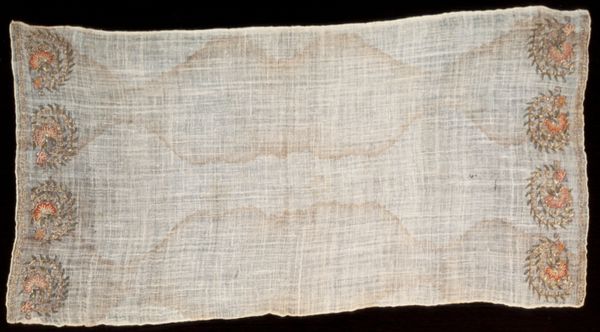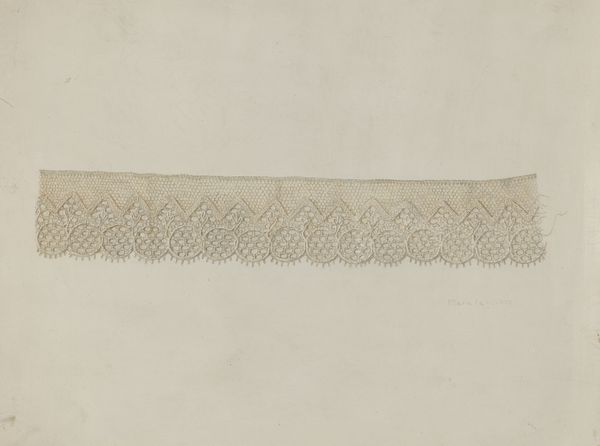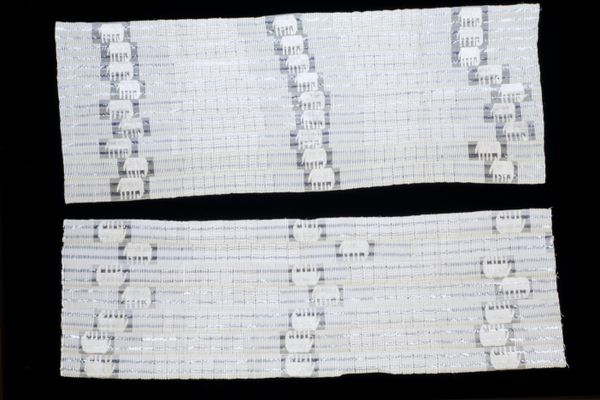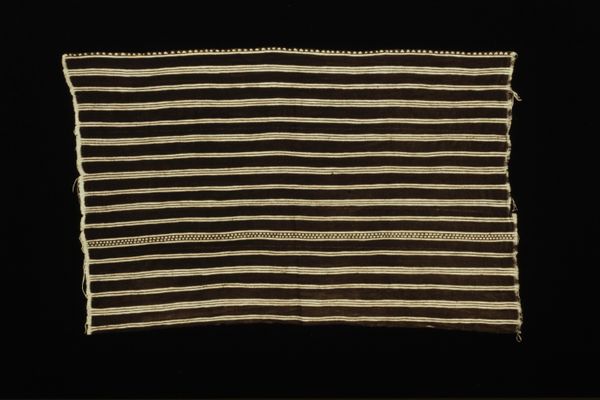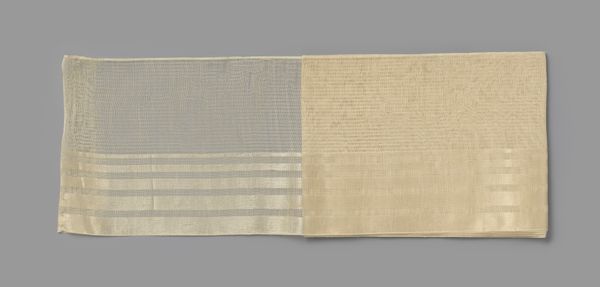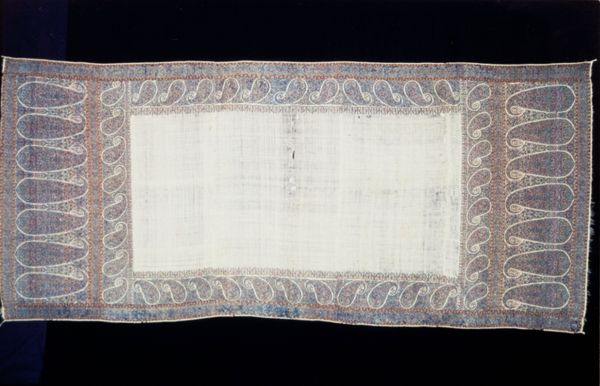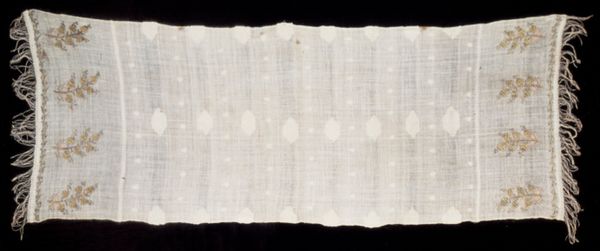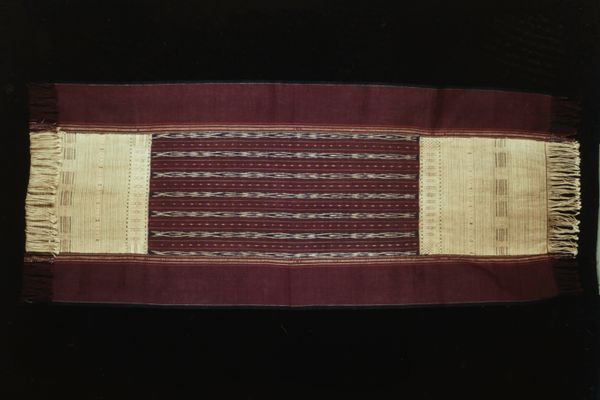
fibre-art, weaving, textile, wool
#
aged paper
#
fibre-art
#
toned paper
#
homemade paper
#
printed
#
reduced colour palette
#
fashion mockup
#
weaving
#
textile
#
wool
#
paper texture
#
personal sketchbook
#
chalky texture
#
line
#
imprinted textile
Copyright: Public Domain
Curator: Welcome. Before us we have "Panels for Overdress," a textile work believed to have been crafted around 1970. The piece resides here at the Minneapolis Institute of Art. We know that its anonymous creator used techniques of weaving, printed design, and other methods with wool and fiber. Editor: I have to say, just looking at this, I feel an unexpected sense of…calm. The muted palette is so soothing. It reminds me of old bed linens, worn smooth with use. Like a whisper of history clinging to fabric. Curator: That's a beautiful observation. If we consider the context of the 1970s, a period of great social and political upheaval, this quietness speaks volumes. Textile art at this time was gaining recognition, often employed by female artists to subvert traditional hierarchies within the art world and make statements about domesticity and craft. Editor: Absolutely! It is subtle, but confident, don't you think? It seems too precise to be haphazard. The blue stripes marching across the canvas…or should I say fabric?...it really looks more planned. It reminds me, in its own small way, of how women's traditional "crafts" were looked down on by some, and here, it is shown with intentional planning. I like that! Curator: I completely agree. While appearing simple, the repetitive pattern creates a visual rhythm, a language, where each "stitch," each decision is part of a larger narrative. Thinking about this in relation to the feminist art movement of the time, this piece could be read as an assertion of value for labor, creativity, and materials historically associated with women's work. Editor: The use of humble materials adds another layer too, right? Nothing flashy, no ostentatious displays…it's about honoring process. Sort of what you said before about that movement of woman's empowerment using this medium, I imagine...and there seems like there's something almost sacred about this piece in its very quiet way. Curator: Precisely! The 'aged paper' and 'toned paper' quality also contributes to this dialogue between past and present. It invites us to consider how our understanding of gender, identity, and artistic value have evolved and how those understandings have remained constant. It truly exemplifies a work where its artistic medium can, itself, say something powerful. Editor: Yes! Well, I know I am ready to grab my knitting needles...or just take a nice long nap enveloped in beautiful textiles, one or the other! Curator: Perhaps both, my friend. It strikes me that “Panels for Overdress” embodies that radical softness, the power to affect change through quiet strength and considered design.
Comments
No comments
Be the first to comment and join the conversation on the ultimate creative platform.
